Fiddling with knobs and dials is a time-honored audiophile tradition. Being able to shape the ultimate sound profile is an essential part of customizing your music listening experience. Nothing brings hi-fi to mind more than the sliders and jumping lights of an equalizer, and there is no reason a good car sound system shouldn’t have the same amenities.
In this article, we want to make it easy for you to add that high-level of control into your car’s audio. We’ll start by running through the terms and options and then show you a top 10 list of the best equalizers you can get. We’ll follow that up with some in-depth information.
- A Quick Guide to Car Equalizers
- Top 10 Best Car Audio Equalizers 2026
- 1. Best Overall Equalizer: Clarion EQS755
- 2. Best Budget Equalizer: Boss Audio AVA1210
- 3. Best Premium Equalizer: DS18 KEQ30
- 4. Easiest Equalizer to Use: Massive Audio EQ4
- 5. Best Digital Signal Processor: Taramp’s Pro 2.6 S
- 6. Best High-Tech Equalizer: Expert PX2CONNECT
- 7. Best Passive Equalizer: SoundXtreme 7 Band Equalizer
- 8. Best Looking Equalizer: Audiopipe 5 Band Equalizer
- 9. Best Equalizer Alternative: Pioneer AVH-200EX
- 10. Best Compact Equalizer: Stetsom STX 2436
- A Closer Look at Equalizers
- Wrapping Up
A Quick Guide to Car Equalizers
As you upgrade your factory audio system in your car, you are going to reach a point where you will desire more control over the sound profiles. There are a handful of different devices that are all used to shape the sound, so let’s start by talking about why you would buy an equalizer over other components.
The Benefits of an Equalizer
The obvious benefit is that you can change how your stereo sounds in order to suit your taste. If you love bass, you can turn the bass all the way up and kill the highs. There are a few less obvious advantages, though.
- You can compensate for cabin noise. Car cabins present a lot of acoustic challenges. You can adjust the sound to better overcome the limitations of a car cabin.
- Equalizers often have amplifier outputs and can be used to convert the high-level signal from your head unit into low-level RCA.
- Many equalizers are also filters, crossovers, and/or preamps. In fact, some equalizers have an AUX input and can be used instead of a head unit altogether.
- They are often easier to use than settings on a head unit. Adjusting the fade on most stereos involves digging into the menu and finding the right buttons to press. Adjusting the fade on an equalizer requires moving the dial labeled “fade.”
Choosing an Equalizer
Choosing the right equalizer for your car is a fairly simple thing to do. That’s because they all do the same thing, so the biggest consideration often comes down to how they look and how easy they are to use.
However, there are a handful of other considerations to help you narrow it down.
Type
We’ll go over them in-depth later, but there are a few different types of equalizers. The two most common are graphic and parametric.
A graphic equalizer allows you to adjust everything by using a dial or slider. A parametric equalizer uses a preset shape, and adjusting the shape will adjust multiple frequencies at the same time. Graphic equalizers are simple to use but offer less customization, while parametric equalizers offer increased adjustability at the cost of a slightly more complex interface.
Outputs
Most cars have four channels. You have front left, front right, rear left, rear right, and sometimes a subwoofer. Make sure to get an equalizer that has enough outputs for your system.
Bands
A band is a range of frequencies that can be adjusted: the more bands, the finer the control. A 3-band equalizer will only give you bass, mids, and highs, whereas a 9-band equalizer will allow you to do things like adjust the low lows and the mid lows.
Size
Many equalizers are the same standard size. It’s called ½ DIN, and it’s half the size of a single DIN stereo spot. Many head unit install kits, as well as many factory dash kits, will have space for a ½ DIN component to be mounted. Other, non-standard-sized equalizers are meant to be mounted near the amps or under the seat.
That’s about it for the basics. Most of the other features will vary greatly between devices, and we’ll explore them in the reviews. The final thing to keep in mind before we jump into it is that we choose ten equalizers that represent a variety of different styles and budgets. As you look through them, think about how they work and how they would look in your car. Let that guide you in order to speed up the process.
| Product | Type | Channels | Bands | Size | Rating |
|---|---|---|---|---|---|
| Clarion EQS755 | Graphic | Front, Rear, Sub | 7 | ½ Din (7”x1”x4”) | 5 |
| Boss Audio AVA1210 | Graphic | Front, Rear, Sub | 7 | Size: ½ Din (7”x1”x4.6”) | 4.5 |
| DS18 KEQ30 | Graphic | Mono | 30 | 10”x1”x7” | 4.5 |
| Massive Audio EQ4 | Graphic | Front, Rear, Sub | 4 | ½ Din (7”x1”x4.125”) | 4 |
| Taramp’s Pro 2.6 S | Parametric w/ Presets | Front, Rear, Sub | 3 | 8.2”x1.7”x4.8” | 4 |
| Expert PX2CONNECT | Digital graphic | Front, Mid, Rear, Sub | 46 | 10”x1.5”x5.5” | 4 |
| SoundXtreme 7 Band Equalizer | Graphic | Front, Rear, Sub | 7 | Size: ½ Din (7”x1”x4.6”) | 4 |
| Audiopipe 5 Band Equalizer | Graphic | Front, Rear | 5 | ½ Din (7”x1”x4”) | 4 |
| Pioneer AVH-200EX | Digital with multiple modes | Front, Rear, Sub | 13 | Double Din (7”x4”x6.5”) | 4 |
| Stetsom STX 2436 | Parametric/Preset | Front, Rear | 15 | 2.9”x1.3”x4.3” | 3.5 |
Top 10 Best Car Audio Equalizers 2026
1. Best Overall Equalizer: Clarion EQS755
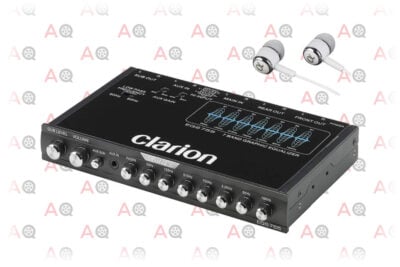
Editor’s Rating:
Quick Facts:
- Type: Graphic
- Channels: Front, Rear, Sub
- Bands: 7
- Size: ½ Din (7”x1”x4”)
The Best Part
It’s a high-quality equalizer that does everything you expect it to do. That might not seem like high praise, but as you research, you will realize that it’s kind of rare that an audio component just functions exactly as you want it to.
Almost all devices nowadays tend to pull towards a specific feature that makes them stand-out; they either emphasize looks or have some gimmick that forces them to make sacrifices in other areas. The Clarion doesn’t do that, and it’s really refreshing.
It has 6 channels of output, so you can run your entire system. It has 7 easily adjusted bands, so you can dial in the sound profile you are looking for. It’s a standard size and includes mounting brackets. It just works.
Our Thoughts
Clarion is a pretty well-known brand in the audio world. They aren’t as big as some of their competing Japanese brands like Sony or JVC, but they do continue the tradition of creating high-quality electronics. That means it’s really no surprise that the EQ they sell is such a sturdy and straightforward device.
It is a little expensive compared to most off-the-shelf EQs, and it doesn’t offer unlimited control. However, if you are just looking for a good equalizer for your system, here it is. You don’t have to spend time adapting or researching, and that’s really valuable.
Compared to Others
We’ll keep this short. If you want to save money and don’t mind parts that rattle as you drive, get the Boss instead.
If you want to have even more control, you will sacrifice ease of use but grab the Taramp’s Pro 2.6 instead.
If you just want a good EQ that will work with whatever system you run, grab the Clarion.
Pros
- Good fit and finish
- Great audio quality
- Very versatile
Cons
- A little expensive for a 7-band EQ
- Is missing some filter settings you might want
2. Best Budget Equalizer: Boss Audio AVA1210
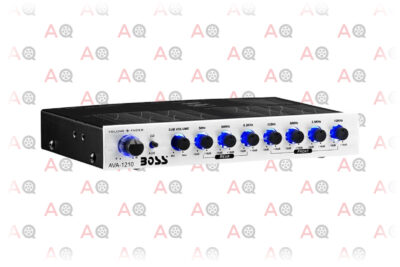
Editor’s Rating:
Quick Facts
- Type: Graphic
- Channels: Front, Rear, Sub
- Bands: 7
- Size: Size: ½ Din (7”x1”x4.6”)
The Best Part
The price is the best part of the Boss AVA1210. It’s fairly standard as far as equalizers go. There are nine bands, six channels, and blue lights. What sets it apart is that you can buy two of them for the same price as their competitor.
Our Thoughts
Boss is one of the biggest players in the budget audio world. They don’t make high-quality, precision devices, and they don’t claim to. They do make products that are perfect for people who want decent audio and aren’t’ swimming in cash.
That has some drawbacks. They work, but you will feel the lack of precision. The plastic knobs rattle a bit, and the pre-installed wiring harness doesn’t inspire much confidence.
You’ll notice it most in the audio, though. Without extensive shielding and better finish practices, it’s easy for interference to make its way into your system.
At the end of the day, though, the price makes up for the flaws. Installing Boss head, equalizer, monoblock, and sub will set you back less than an average car payment, and your sound system will sound hundreds of times better than it will fresh from the factory.
Compared to Others
If you can afford it, and you are a little more serious about audio, the Clarion will last longer and has less risk of unwanted noise. Otherwise, there is another budget EQ that you can compare the Boss to, the Massive Audio EQ4.
They both have all the important outputs, and they both are mild preamps. The massive doesn’t give you as much control over the sound profile, but it is very solidly built and easy to install. The Boss gives you a lot more options and has a lot more community support. Unless you value the simplicity of the Massive Audio EQ, the Boss will suit you just fine.
Pros
- Inexpensive
- Good quality for the price
- Offers more profile control than similar products
Cons
- Feels cheap
- Can introduce noise if not installed perfectly

Editor’s Rating:
Quick Facts
- Type: Graphic
- Channels: Mono
- Bands: 30
- Size: 10”x1”x7”
The Best Part
There exist people that will not be satisfied until the sound they are getting from their speakers is absolutely perfectly balanced to their taste. Those people need a device like the DS18 because nothing else will give them that level of control.
To put it into perspective, a standard guitar amp has 3 EQ knobs. Your average radio has 5, and a majority of car audio equalizers have 7 bands. The DS18 has 30. Don’t like the high pitch finish from the high-hat in the live recording of Layla? Tune that specific range out and enjoy the rest.
Our Thoughts
This equalizer isn’t for everyone. It’s expensive, and chances are you’ll need two of them because there is only one left output and one right output. You’ll also want to pick up a noise filter to go with it because it doesn’t have one built-in. It’s a very unfriendly device that really is best suited for people who have a powerful need to mess with knobs.
We really can’t stress the idea that this isn’t a straightforward device enough. It doesn’t have low-level inputs, and it’s too big to mount above a head unit. You have to think about all parts of the installation process.
It is really high-quality, at least. Even the RCA inputs are better quality than most other equalizers; you will find a level of detail on the DC18 that you won’t find elsewhere.
Compared to Others
For 90% of people, the Clarion 7-band offers a perfectly adequate amount of control. It costs a lot less, and you only need one of them to tie in a complete audio system.
Nothing offers the level of intuitive level of control that the DS18 offers, though. Some digital processors have more options, but they are much harder to use.
Pros
- Has a gigantic number of tuning options
- High-quality
- Easy to use
Cons
- Very expensive
- Difficult to install into a system
4. Easiest Equalizer to Use: Massive Audio EQ4

Editor’s Rating:
Quick Facts
- Type: Graphic
- Channels: Front, Rear, Sub
- Bands: 4
- Size: ½ Din (7”x1”x4.125”)
The Best Part
The Massive Audio EQ4, an ironic name, is a simplified, easy-to-use version of all the large equalizers on our list. That’s awesome because it keeps the price way down and makes it accessible to anyone.
That accessibility is two-fold. It’s easy to use because it’s simple, but it doesn’t make sacrifices on the input/output side. That’s a good thing because it means you don’t need to work harder to solve problems. If you want to plug in an amp for a sub, you just plug it in; no clever stack of adapters necessary.
Our Thoughts
Sometimes simple is perfect. It’s only a 4-band EQ, but that’s enough to dial in a general sound profile. What sets this EQ apart from other simple equalizers is that it has a full complement of high and low inputs and six channels. Some of the other inexpensive equalizers on our list lack an output for subwoofers, for instance.
That being said, there are downsides to simplicity. You either will have to put up with unwanted noise because you want extra bass, or you will lose out on some bass response.
There’s another issue. It depends on what stereo you already have, but most head units have at least a very modest equalizer. One of the best reasons to buy an equalizer is that you can get a better level of control than a factory stereo could ever offer. The Massive Audio EQ is so simple, though, that you may actually get more control from your existing head.
Compared to Others
Most likely, you will be trying to decide between the Boss EQ and this one. The Boss has a lot more control, and it lights up blue. It’s really close to the same price, so if you are just looking for more knobs and buttons than the Massive Audio EQ offers, get the Boss.
The Massive Audio EQ is easier to install, easier to use, and has its own AUX input. It really comes down to what level of fiddling you want to do.
Pros
- Very easy to install
- Easy to use
- Inexpensive
Cons
- Lacks fine-tuning capabilities
- May produce unwanted noise
5. Best Digital Signal Processor: Taramp’s Pro 2.6 S

Editor’s Rating:
Quick Facts
- Type: Parametric w/ Presets
- Channels: Front, Rear, Sub
- Bands: 3
- Size: 8.2”x1.7”x4.8”
The Best Part
A digital audio processor is a lot more than just an equalizer. It’s sort of an all-in-one audio device that includes filters, phase switches, limiters, and tone generators in addition to being an equalizer. That makes them perfect if you want a lot of control over your audio signal without having to invest in and install a bunch of different devices.
Our Thoughts
Taramp’s is a newcomer in the car audio world. They build amps that compete with giants like JVC and Alpine, but the company is barely two decades old and was started in Brazil. They have been trying very hard to prove themselves as a company that provides great value, and it shows. This DSP, or digital sound processor, is one of the best bang-for-your-buck devices you can get for shaping in-car audio.
What you don’t get from a DSP is simplicity. Everything is hidden behind menus, and there is a learning curve to using a parametric equalizer that other equalizers don’t have.
It’s also expensive for an equalizer. It’s a good value, but it is on the pricey side. That means that if you just want a good equalizer, you will be spending more than you need to for something that’s harder to use.
Compared to Others
Like we said above, if you just want a simple equalizer, this isn’t for you. The Clarion EQS755 is a high-quality, easy-to-use equalizer that is much better suited for that purpose.
Otherwise, there are a couple of their digital processors on our list: the Expert EQ, which has a pretentious name but is remarkable for being controlled from a smartphone app, and the Stetsom, which is super compact.
Taramp’s DSP is the best all-around choice, though. That makes it perfect for people who don’t have any specific feature they need but want to buy something that will allow them to experiment with everything.
Pros
- Has a ton of functionality
- It’s a great value
- Good quality
Cons
- It can be hard to use
- Has a lot of features that most people won’t use
6. Best High-Tech Equalizer: Expert PX2CONNECT
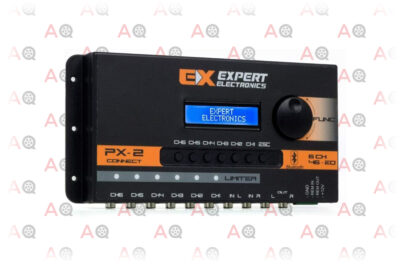
Editor’s Rating:
Quick Facts
- Type: Digital graphic
- Channels: Front, Mid, Rear, Sub
- Bands: 46
- Size: 10”x1.5”x5.5”
The Best Part
The nicest thing about the Expert Electronics processor is that you get an insane amount of control over the sound profile. Everything about the device is dedicated to customizing the sound. You have a ton of output options, so you can customize speaker and amp configurations. The equalizer portion of the processor has a whopping 46 customizable bands, and in addition to being an equalizer, you can also add filters, gain, and a variety of other effects.
Our Thoughts
This digital processor is an entire sound studio in a small black box, and that’s amazing. You just need to be aware that there’s nothing simple about any of it. There is a dial on the face of the device, but there are hundreds of settings to scroll through and adjust. That leads you into using the app instead, which is easier to use, but there’s still a ton of settings.
The complicated usage is made worse by the fact that the documentation that comes with the device is bad. If you aren’t familiar with things like pass-filter and parametric curve, the instructions certainly aren’t going to help you understand.
People who do understand what all those extra features do will be pleased with the amount of control, though. Instead of having to link in a bunch of different separate devices, you can just throw this in and call it good.
Compared to Others
There isn’t anything that offers as many different controls as this device does, but the Stetsom STX is also a Bluetooth capable audio processor. If Bluetooth connectivity is important to you, and you want something a bit easier to use, the STX is great.
The real reason you’d avoid the Expert Electronics processor is that you don’t need all the extras. A Boss AVA1210 is a fine equalizer that doesn’t require you to spend hours learning to use it.
Pros
- Offers a ton of features
- Gives you a lot of profile control
- Can be controlled with your phone
Cons
- It’s very complicated
- The app and instructions could be more helpful
7. Best Passive Equalizer: SoundXtreme 7 Band Equalizer
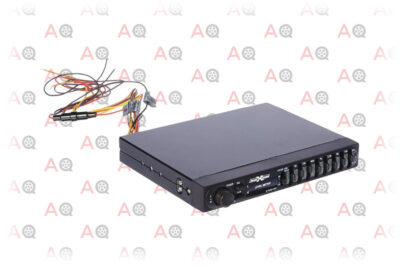
Editor’s Rating:
Quick Facts
- Type: Graphic
- Channels: Front, Rear, Sub
- Bands: 7
- Size: Size: ½ Din (7”x1”x4.6”)
The Best Part
Almost all modern equalizers use compact dials for setting the levels, which is fine, but it lacks the tactile satisfaction of classic slider-based equalizers. The SoundXtreme device bucks the new tradition and brings those classic sliders into the automotive world.
It’s also passive. That means that you don’t have to tie it into a power source; you just install it between the head and the speakers.
Our Thoughts
Let’s start with the bad this time. It being passive means that you don’t get any extras. No power boosting, no extra preamp outs, no displays, just a handful of sliders. It’s great if you have a smaller or older audio system in your car, but you’ll probably miss some of those features if you have a modern system.
The other issue is that the quality isn’t very high. One of the things we really love is how the equalizer feels old-school. Unfortunately, part of the reason it feels so classic is that the quality is pretty low. It’s very reminiscent of electronics from the 80s. The cheap plastic and thin wires would be right at home in a Fiero but are a little lacking for modern systems.
That being said, we do love how easy it is to use and appreciate that they kept it simple and good looking. Looking at it, you know what it is and how to use it. That’s a nice change of pace in the digital world.
Compared to Others
The Boss Audio AVA1210 is about the same price, has the same level of control, and also has high-level outputs. The big difference is that the Boss is a modern, powered equalizer that fits right into current systems.
It doesn’t look as good, and it needs power, though. You’ll have to decide if the intuitive and classic design of the SoundXtreme is worth it.
Pros
- Passive EQ is good for older systems
- Sliders are easy and intuitive to use
- Has a very classic look
Cons
- Low on features
- Not very good quality
8. Best Looking Equalizer: Audiopipe 5 Band Equalizer
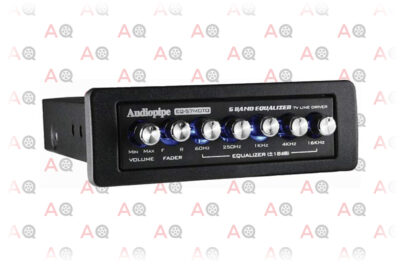
Editor’s Rating:
Quick Facts
- Type: Graphic
- Channels: Front, Rear
- Bands: 5
- Size: ½ Din (7”x1”x4”)
The Best Part
Call us vain, but we love devices that are more than just a purely functional piece of equipment. This Audiopipe looks like a piece of factory equipment. The flush mounting and trim bezel allows you to simply slide it into a DIN slot underneath a radio or dash pocket and have it look great. To top it off, the dials light up blue so you can scoop the mids in the dark.
Our Thoughts
Behind the fancy faceplate, the Audiopipe is just a standard equalizer. We wish it had a subwoofer output, and we wish it had a little bit more control options, but it works just fine. It’s also on the less expensive side, which is always a plus.
Really the entire reason this device is on the list is because of how easy it is to install and look good. It doesn’t need to be more than that.
Compared to Others
The Audiopipe equalizer sits below the Boss AVA1210 and Massive Audio EQ4 in terms of functionality. They all cost about the same, so you just have to choose which feature is most important to you.
People who want a lot of control over the sound will prefer the Boss, while people who still want something simple but want a sub output should go with the Massive Audio.
If you don’t need the extra complexity and want something that looks great, though, the Audiopipe is perfect.
Pros
- Looks great
- Easy to install
- Inexpensive
Cons
- Lacks a subwoofer output
- Has few features
9. Best Equalizer Alternative: Pioneer AVH-200EX
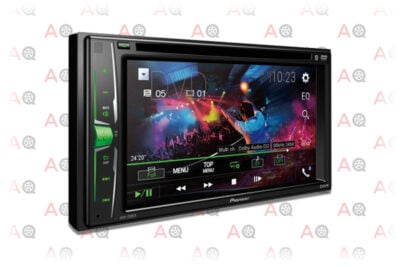
Editor’s Rating:
Quick Facts
- Type: Digital with multiple modes
- Channels: Front, Rear, Sub
- Bands: 13
- Size: Double Din (7”x4”x6.5”)
The Best Part
Chances are that you are looking at getting an equalizer because you want better sound quality from your car stereo. Better sound quality starts with the head unit, though. If you are going to be upgrading your stereo, you spend a little bit more on the head unit and get one with an equalizer rather than spending extra money on a separate equalizer.
Our Thoughts
Pioneer is an industry leader in-car audio, and their AVH series head units are absolutely great. If you want, we have an entire write-up about touch screen head units, so you can have more options than just this Pioneer. It’s really hard to beat the Pioneer, though.
There are a couple of reasons to avoid going this route. If you already have a good head unit, it doesn’t make sense to spend a ton of money to get a new one when a relatively inexpensive equalizer would be fine.
That leads to the second problem: it’s pretty expensive. It’s very convenient to have a head, equalizer, and preamp in one device, but it would be cheaper to source all the parts separately.
Compared to Others
The equalizer itself is very competent. You could easily compare it to Taramp’s Pro parametric equalizer in terms of ease of use. The Pioneer’s equalizer has even more fine-tuning potential, though, since you can adjust ranges individually in addition to adjusting the curves.
Like we mentioned above, the cost is the biggest drawback. If you already have a decent head unit, the Clarion 7-band EQ is a great equalizer, and it’s far less expensive. However, anyone that’s also looking to upgrade their head unit will love this Pioneer.
Pros
- High-quality
- The integrated equalizer is easy to use and fine-tune
- The integrated equalizer keeps things compact
Cons
- It’s expensive
- Not very useful if you already have a good head unit
10. Best Compact Equalizer: Stetsom STX 2436
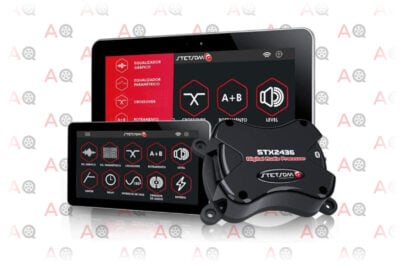
Editor’s Rating:
Quick Facts
- Type: Parametric/Preset
- Channels: Front, Rear
- Bands: 15
- Size: 2.9”x1.3”x4.3”
The Best Part
Easily the best part about this little processor is that you get a ton of control from a tiny box that can be mounted almost anywhere. It’s less than half the size of most equalizers, but that’s actually not what makes it so easy to install into any system.
Since you don’t have to physically access this device, you can install it anywhere. You can hide it under a seat, behind a dash panel, or under the glove box. If space is at a premium, it’s the perfect solution.
Our Thoughts
On paper, this thing is awesome. You get a lot of audio control from a tiny box, and since it’s driven by the Android operating system, it’s easy to use.
There are just a handful of issues that prevent it from being great. It is easy to use, just as long as you are willing to decipher the language. The menus, documentation, and even the marketing content are all written in some kind of English hybrid.
It’s also just not as high-quality as the price would suggest. Stetsom chose to include a ton of features over using more durable materials. That means you risk a little bit of line noise, and it probably won’t survive being drop kicked.
Compared to Others
There are two other high-tech gadgets on our list, and both are of better quality. That seems harsh to say, but we want to be honest. The Expert 6ch is also fully controllable using a cell phone, and the Taramp’s Pro offers a lot more functionality.
However, everything else on our list needs to be installed in a spot you can easily access. This Stetsom device doesn’t. It doesn’t matter how good a different device’s quality is if you don’t have room to install it.
Pros
- Can be installed in hard to reach spots
- Very compact
- Android app is easy to use
Cons
- There are some language issues
- Quality could be better
A Closer Look at Equalizers
Welcome to the in-depth section. Here we’ll break down some of the bigger differences between devices as well as give you some tips and tricks to get the most out of your experience. First, though, there are a ton of audio terms used throughout this article.
You may have heard most of them before, but just in case you haven’t, we’ll start by defining them.
Glossary of EQ Terms
- Channel: Each separate audio signal is called a channel. The easiest way to understand is to look at a pair of headphones. Stereo headphones have a left and a right channel.
- Crossover: A crossover is a device that splits a single audio signal into multiple signals based on their frequency.
- DSP: Digital Sound Processors are devices that are active equalizers, crossovers, and often feature more advanced capabilities like the ability to add effects to the sound.
- Fade: The balance between the front and the rear channels is known as fade. The balance between the left and right channels is usually just called balance.
- Filter: Filters only allow certain frequencies through. A high-pass filter will cut out low frequencies sounds, a low-pass filter will cut out the high frequencies, and a variable filter can be adjusted to remove a range of frequencies.
- Head: The stereo receiver, or head, is the face of your audio system. It’s usually responsible for generating the audio signal, and they are often the first thing you upgrade when you upgrade your audio.
- High-Level: High-level inputs and outputs are your standard speaker, or line, level signals. Your factory audio system uses high-level outputs to connect the speakers to the head unit.
- Low-Level: Low-level outputs are found on preamps and other similar devices. They are almost always RCA connections, and you need them in order to connect to larger amplifiers and other high-end audio components.
- Profile: The sound profile, sometimes called the shape or signature, is the way certain frequencies come through when you hear the sound. You adjust the profile by changing the emphasis on certain frequencies.
Equalizer Types
We mentioned two different types of EQs in the intro, but there are actually a lot more. You can read about all of them in this great article, but generally, for car audio, you are only going to be dealing with a few different styles. You can break them down into four main categories.
Digital vs. Analog
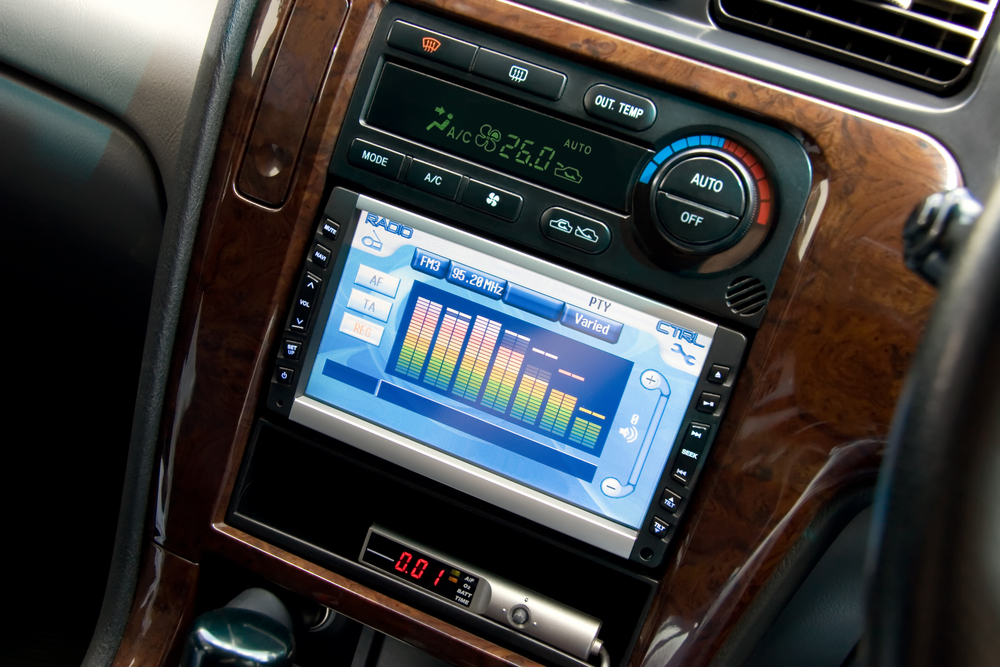
When you think of an equalizer, you probably imagine moving dials or sliders that correspond to frequency ranges. Those are analog devices. Often when you rotate a dial on an analog EQ, you are physically moving a potentiometer that is directly tied into the signal.
A digital EQ uses a processor to change the signal for you. You will have to rely on a display that represents the audio profile rather than direct interaction. Digital EQs do have a handful of advantages. They often have presets, so you can select “rock” if you are listening to rock music. They can also function as multiple different types of EQ; many have both a graphic mode and a parametric mode.
Ultimately it’s about the feel. Some people prefer the tactile feedback that something like the Boss Audio AVA1210 physical knob gives them, while some people would prefer to see the readouts on a screen with an EQ like the Taramp’s Pro 2.6 S.
Parametric vs. Graphic
Most of the time, when you think of an equalizer, you are picturing a graphic equalizer like our top overall pick. Those are the ones with a bunch of dials, and each dial corresponds to a specific frequency. If you want to turn the bass up, you find the dial with lower numbers and turn it up.
A parametric equalizer like the Stetsom STX 2436 is a lot more complicated. To simplify it, think of a graphic equalizer that can control one thing: the volume of a single frequency range. A parametric equalizer can shape not just that single frequency range but also the frequencies affected by that frequency, and it can change the tone entirely by bringing out specific frequencies inside the range.
The parametric EQs we have on our list are all semi-parametric; you don’t have infinite control. It is still a ton more than a traditional graphic EQ, so you have to decide if you want that extra complication or not.
DSP
When you look for equalizers, you will also run into digital signal processors like Taramp’s Pro 2.6 S. A DSP is an equalizer; it’s also a lot of other things. Think of them as tiny computers that you plug your stereo into. Using a digital processor to do the bulk of the work that an analogy circuit would have to do, you can save a lot of space and control more.
Getting the Most out of Your Car Audio Equalizer
The following are some simple tips on getting the most out of your new EQ. If you want to take a really deep dive into the settings, check out this article by Digital Trends.
- There’s no such thing as the perfect EQ, only what you like the best. Don’t feel like you have to turn up the bass.
- Beware of clipping. Clipping is what happens when a frequency cuts out because the volume is higher than the speaker can handle, and it adds distortion to your music. It’s often better to turn other frequencies down rather than turn one frequency up.
- Don’t be afraid of presets. It’s not as much fun as messing with the dials, but they can offer a great starting point.
- Use a high-quality source to set your EQ. Things like AM/FM radio do not have the frequency range to adequately reflect the EQ settings. If you can, play a high-bitrate MP3 or FLAC file directly from a USB, DVD, or your phone over AUX.
Wrapping Up
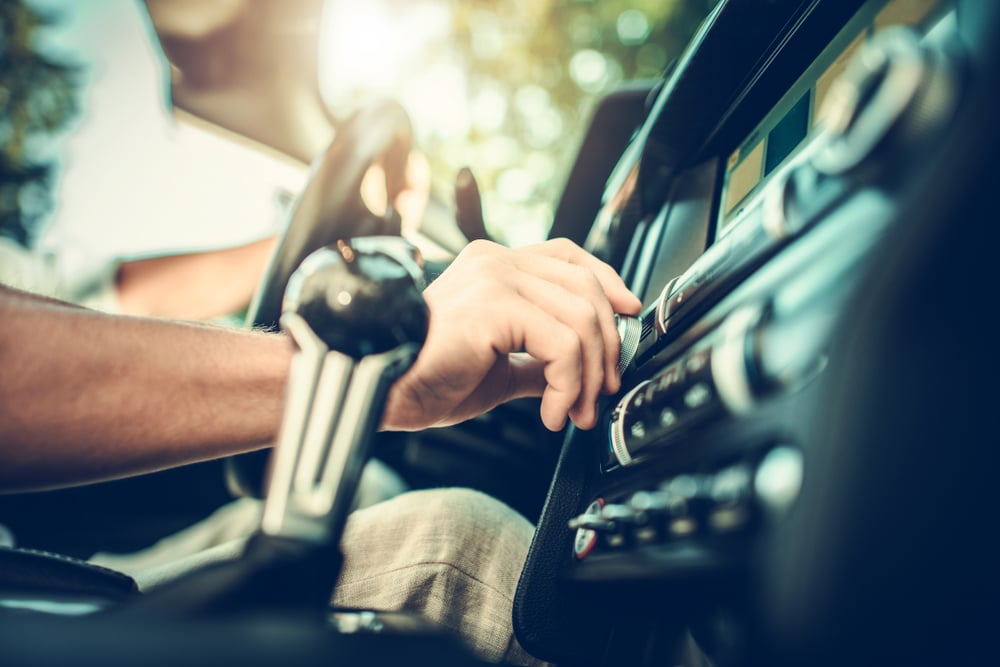
If you are like us, you probably spend tons and tons of time building the perfect music playlists to listen to while you drive. It only makes sense to be able to tweak your car’s audio system to better fit that playlist and get the most out of your listening experience. Plus, who doesn’t like to mess with a bunch of dials and pretend you are mixing a new single?


